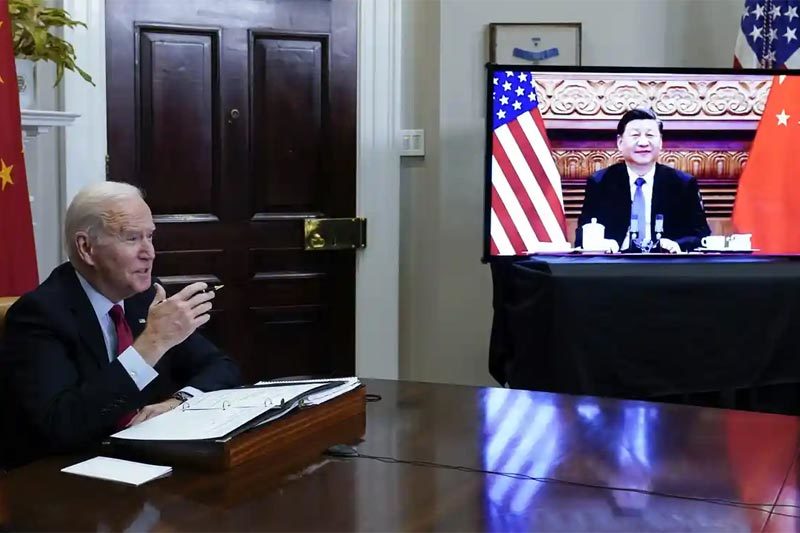Asia moves towards nuclear power amid energy crisis
Nuclear power could be the solution to the energy crisis in Asia amid the Russia-Ukraine conflict, although safety concerns remain.
Nuclear power is gradually becoming an attractive option for Asian economies, in the context that the world is facing an energy crisis due to the Russia-Ukraine conflict.
“Who can refuse a power source that emits 70 times less CO2 than coal, 40 times less than gas, 4 times as much as solar, twice as much as hydro and the equivalent of wind power?” , a representative of Orano, a nuclear fuel cycle manufacturer based in Hauts-de-Seine, France, asked.
At the COP26 climate change conference in Glasgow in November 2021, nuclear power was seen as a potential solution to the goal of being carbon neutral. The European Union (EU) in February awarded nuclear power a green label, claiming it to be the most reliable and cost-effective energy source.
Before the Russia-Ukraine conflict broke out, many Asian and European countries considered Russian gas to be the main source of energy and safer than nuclear energy. This view is reinforced after the earthquake and tsunami that hit the nuclear power plant Fukushima 2011.

Photo of the Fukushimai Daiichi nuclear power plant in Okuma town, Fukushima prefecture, Japan, February 13, 2021. Image: Kyodo.
However, 11 years later, Japan thinking again about nuclear redevelopment in the context of this country’s efforts to reduce its dependence on Russian energy.
In late March, the eastern electricity grid, which supplies electricity to the capital Tokyo, was overloaded, prompting businesses and households to be asked to save electricity. For the first time since the Fukushima disaster, a Nikkei poll in March showed 53% of respondents in favor of restarting Japan’s nuclear plants.
Japanese Prime Minister Fumio Kishida on April 8 set a goal to maximize the use of renewable energy and nuclear after the country imposed a ban ban on import of Russian coal. “The goal of restarting nuclear power plants is very important,” Mr. Kishida once said after being elected in October 2021.
“It’s time for Japan to seriously think about how to be self-sufficient in electricity,” said Ryuzo Yamamoto, an energy security expert at Tokoha University in Shizuoka Prefecture. “Japan currently faces many energy challenges, but the nuclear issue has not been given enough attention.”
Singapore was also once a country hesitant about nuclear energy. A 2012 study concluded that “conventional large reactor technology is not suitable for deployment in Singapore”.
But after a decade, technology has changed, today’s reactors are smaller, have better cooling systems, and emergency response measures are also faster, according to Alvin Tan, minister of foreign trade and Singapore Industry.
“Small-modular fourth-generation nuclear reactors (SMRs) are designed with enhanced safety systems that older technologies do not have,” Minister Tan told the country’s parliament on Wednesday. 4.
This statement prompted Duong Hu Wai, an MP from the People’s Action Party, to question why Singapore did not promote the application of this technology sooner so that it could become a pioneer.
This is also a question asked by many politicians as well as scientists in the context of the hot nuclear debate in Asia.
“There is no such thing as a zero-risk activity,” said Anil Kakodkar, a nuclear physicist and former chairman of the Atomic Energy Commission of India. “You can say radiation causes cancer, and I say radiation cures cancer, both of which are correct.”
China, which accounted for 56% of total global coal consumption in 2020, also considers nuclear power to play an important role in securing its energy supply chain and its 2060 carbon neutral target.
The National Development and Reform Commission (NDRC) and China’s National Energy Administration (NEA) issued guidelines in March saying they would maintain construction speed and ensure project safety. new coastal nuclear power.
China aims to have 70 GW of nuclear power by 2025. “Nuclear power is an important piece in China’s energy network, it is worth noting that it ensures safety, high efficiency and processing method. radioactive waste,” said Dr. Yao Fuqiang, a senior adviser at the Institute of Energy at Peking University.

China’s Taishan nuclear power plant during construction in December 2013. Image: AFP.
As of the end of 2019, China’s total nuclear power capacity reached nearly 66 GW, the second highest in the world, after the US. If you add the capacity of the 53 reactors under construction, China will lead the world in nuclear power, according to the World Nuclear Association.
However, besides the great potential of nuclear power, some countries and territories in Asia still harbor the fear that humanity may be smart enough to develop nuclear energy, but has not yet developed nuclear power. wise enough to manage them safely.
The island government of Taiwan in December 2021 held a referendum to determine the fate of Lungmen, the fourth nuclear plant on the island, started in 1980 but has not been completed until now. The referendum results showed that nearly 53% opposed continuing to build the factory.
Taiwan’s leader Tsai Ing-wen has pledged to phase out nuclear power by 2025 and replace it with renewable energy. However, independent journalist Angelica Oung called the decision “crazy”.
“With rapid economic growth in recent years, Taiwan will face an energy crisis,” Oung said. “The chip industry requires huge amounts of electricity.”
Ms. Oung also argued that giving up nuclear energy could pose a security risk, as it could make the island of Taiwan more dependent on LNG imports from Australia, Qatar and the US.
Despite suffering from severe environmental pollution, India is still not interested in nuclear energy.
The world’s second most populous country once planned to triple its nuclear power production to 22,480 MW by 2031, aiming to be carbon neutral by 2070. However, nuclear power will not close until 2021. contribute 3.1% of the country’s total electricity.
India’s reluctance to nuclear power is said to stem from concerns about the safety of the reactors as well as the high cost, partly because India has to import all the technology and equipment. equipment and nuclear fuel.
“Nuclear power has been tested for decades and has never really worked for India,” said Sunil Dahiya, an expert at the Center for Research in Energy and Clean Air (CREA). know. “We do not expect nuclear power to take a large share of the clean energy grid in India.”
Isabella Suarez, senior analyst at CREA, said that Asian countries as they move towards nuclear power need to clarify why they want to invest in this energy source and whether it is a better solution than the nuclear power plant. other types of renewable energy or not.
“The lifetime of a new nuclear plant is about 20 years, so if the goal is to quickly switch to zero-carbon energy, they have to build it quickly to meet the growing energy demand.” , said Suarez. “The cost of building a nuclear power plant is very high, so if the goal is just stabilizing energy prices, that’s not the ideal solution.”
Duc Trung (According to Nikkei Asia)
at Blogtuan.info – Source: vnexpress.net – Read the original article here


